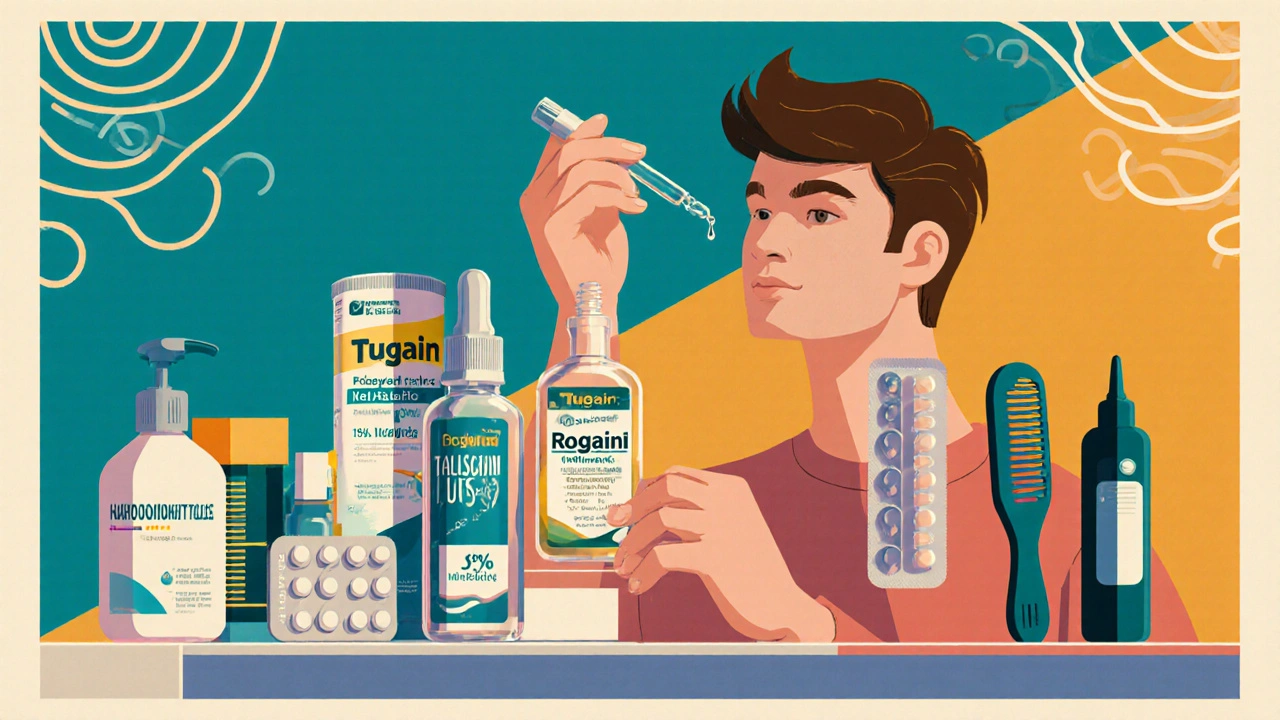Minoxidil: Your Go‑to Guide for Hair Loss
When working with Minoxidil, a topical vasodilator repurposed to stimulate hair follicles and slow thinning. Also known as Rogaine, it works by widening blood vessels, improving nutrient flow to the scalp, and extending the growth phase of hair. This makes it a cornerstone for anyone tackling hair loss.
One of the main conditions Minoxidil targets is androgenetic alopecia, the hereditary pattern of thinning that affects millions of men and women worldwide. The condition is driven by hormonal and genetic factors that shrink hair follicles over time. Minoxidil counters that shrinkage by reviving dormant follicles, so users often see thicker strands within months. Because androgenetic alopecia is the most common cause of hair loss, understanding its link to Minoxidil is essential for effective treatment.
For those looking to boost results, dutasteride, a 5‑alpha‑reductase inhibitor that reduces the conversion of testosterone to dihydrotestosterone (DHT), frequently enters the conversation. DHT is a key driver of follicle miniaturization in androgenetic alopecia. By lowering DHT levels, dutasteride tackles the problem at its hormonal source, making it a powerful partner to Minoxidil’s follicle‑stimulating action. Combining the two creates a dual approach: dutasteride handles the hormone side while Minoxidil fuels growth.
Another popular companion is finasteride, a prescription pill that also blocks DHT but targets a slightly different enzyme subset than dutasteride. Many users start with finasteride because it’s widely available and well‑studied, then add Minoxidil for visible scalp benefits. The finasteride‑Minoxidil combo follows the same principle: one reduces the cause, the other promotes the cure. Deciding between dutasteride or finasteride often depends on doctor guidance, side‑effect tolerance, and personal preference.
Practical tips matter as much as the science. Apply Minoxidil twice daily to a clean, dry scalp, using the recommended dose—usually 1 mL for liquid or one‑half a tablet‑sized foam. Consistency is key; missing applications can stall progress. Watch for mild irritation, which usually fades with continued use. If you pair Minoxidil with dutasteride or finasteride, monitor blood work and discuss any sexual side effects with your clinician. This integrated regimen illustrates a classic semantic triple: Minoxidil stimulates growth, dutasteride reduces DHT, together they enhance hair density.
Below you’ll find a curated list of articles that dive deeper into each of these topics—real‑world dosing guides, side‑effect management, comparison charts, and the latest research findings. Whether you’re new to hair‑loss solutions or fine‑tuning an established routine, the posts ahead will give you actionable insights to make the most of Minoxidil and its allies.
Tugain Minoxidil vs Alternatives: Detailed Comparison
A thorough side‑by‑side look at Tugain Minoxidil versus finasteride, Rogaine, ketoconazole shampoo and laser therapy, covering how they work, costs, side effects and best use cases.
Read more
